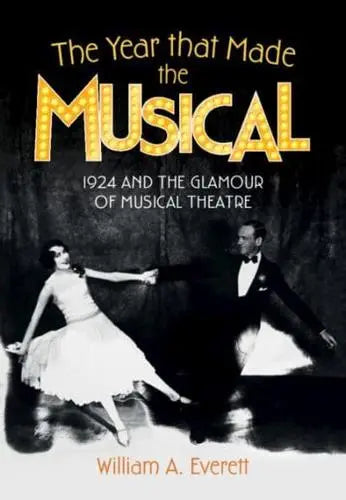The Year that Made the Musical
1924 and the Glamour of Musical Theatre
Author(s): William A. Everett
Couldn't load pickup availability
🚚 Please note we can only ship within the UK.
FREE delivery on books (excluding sale).
Delivery for other items is £1.50 - £4.50, calculated at checkout.
T&Cs apply.
Free click & collect on all orders.
Whether they appeared on Broadway or the Strand, the shows appearing in 1924 epitomized the glamor of popular musical theatre. What made this particular year so distinctive – so special – was the way it brought together the old and the new, the venerated and the innovative, and the traditional and the chic. William Everett, in his compelling new book, reveals this remarkable mid-Roaring Twenties stagecraft to have been truly transnational, with a stellar cast of producers, performers and creators boldly experimenting worldwide. Revues, musical comedies, zarzuelas and operettas formed part of a thriving theatrical ecosystem, with many works – and their leading artists – now unpredictably defying genres. The author demonstrates how fresh approaches became highly successful, with established leads like Marie Tempest and Fred Stone appearing in new productions even as youthful talents such as Florence Mills, Fred and Adele Astaire, Gertrude Lawrence and George Gershwin now started to make their mark.
- A sustained, zesty and engaging exploration of one of the most remarkable and action-packed years in the entire history of musical theatre
- Discusses key productions like Lady, Be Good! and emerging stars who include Adele and Fred Astaire, and Gertrude Lawrence (who in 1924 made her Broadway debut), as well as crucial artists like George Gershwin (who had three different musicals open in the same year)
- Includes compelling in-depth coverage of Black artists, creators and shows as well as the work of women creators in professional musical theatre and its challenging contexts
- Wide-ranging in scope: goes beyond the USA and UK in its coverage of 1924 musicals to address what was happening in Italy, Spain, Germany and Austria, as well as beyond
- Strong appeal not just to those in musical studies but indeed to anyone interested in the glamor and innovative artistic creativity of the Roaring Twenties, as well as to students of social history more generally
Share


